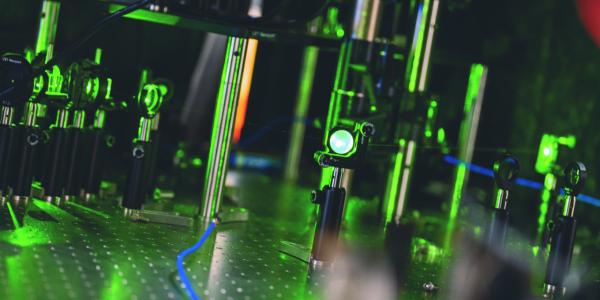WashU-led study of trace elements could help guide the quest for signs of life on the Red Planet.
Nearly four years after landing on Mars, the Perseverance rover continues to collect and study rocks and rocky soils on the surface of the Red Planet. But the NASA rover isn’t just taking in the views. A new study from WashU researchers assessed the ability of the rover’s hypersensitive scanners to detect and quantify rare earth elements — geochemical features with important implications for our quest to understand ancient habitability and the possibility of past life on Mars.

An international team of researchers led by Scott VanBommel, a senior research scientist with the Earth and Planetary Remote Sensing Laboratory in the Department of Earth, Environmental and Planetary Sciences, combed through signals from Perseverance for signs of rare earth metals, including yttrium and cerium. Their findings were recently published in the journal Icarus.
Study co-authors include John Christian, a postdoctoral researcher in the Department of Earth, Environmental and Planetary Sciences, and Abigail Knight, a staff scientist in the department. Christian and Knight are both staff members of the Geosciences Node of NASA’s Planetary Data System, a WashU-based repository of data from Mars, the Moon, and other planetary bodies.
Perseverance uses an X-ray spectrometer called PIXL (Planetary Instrument for X-ray Lithochemistry) to quantify various elements in Mars rocks and regolith. Any rare earth elements the device identifies can help scientists understand past volcanic activity on Mars and possible elemental similarities between that planet and our own.
One element in particular, cerium, has additional significance: It can complicate the search for organics on Mars, a major focus of the Perseverance mission. The rover has a second spectrometer, SHERLOC (Scanning Habitable Environments with Raman & Luminescence for Organics & Chemicals), that looks for organic compounds.
“Under certain conditions, even tiny amounts of cerium can mimic the signal of organic compounds,” VanBommel said. “We were motivated to see just how much cerium is present in the samples.”
A closer look at the signals from Perseverance proved the power of PIXL’s vision. The device could detect traces of yttrium, an element that, on Earth, is even rarer than cerium. However, the search for cerium was more complicated. Because of its atomic structure, cerium gives off X-ray signals similar to other, much more common elements such as titanium and chromium.

Ultimately, the team concluded it was unlikely PIXL would be able to detect cerium at levels commonly expected on Mars. This finding led to an important takeaway: To fully understand the materials studied by Perseverance, researchers need to get the samples back to Earth. “We can do a lot more with the technology we have on Earth than we can with remote sensing instrumentation,” VanBommel said.
The rover is doing its part by collecting rock core and rocky soil samples, with one cache complete and deposited on the floor of Jezero Crater and the others still onboard the rover. NASA is considering options for the potential retrieval and return of Martian samples, perhaps sometime in the 2030s.

Until then, researchers around the world will continue to pore over the streams of information coming from Perseverance to gain every possible insight into the planet’s conditions. As the home of the Geosciences Node of NASA’s Planetary Data System, WashU collects and curates data from NASA missions and makes them freely available to scientists and the public.
“Through the Geosciences Node, we’re closely connected to a number of NASA missions,” VanBommel said. “Much of the archived data come from spacecraft in orbit, though, in my case, I’m looking at data collected from just a few centimeters above the surface of Mars.”
Even with close-up views, it’s an incredible challenge for Perseverance to unambiguously detect signs of ancient life on its own, VanBommel said. “If Mars ever had life — and that’s still a big if — it would have been very simple. And with the constant radiation that the planet currently receives, the surface is not friendly to preserving potential chemical signatures of past life. It’s all the more reason to return these samples to Earth for analysis.”
“These results are exciting, but illustrate just how difficult it is to be certain that a possible biosignature is in fact a real one,” said Paul Byrne, associate professor of Earth, environmental, and planetary sciences, and the director of the Geosciences Node. “The best way we have of dealing with this uncertainty is by getting those samples in laboratories on Earth, where we can use techniques available to us today, and those yet to come, to answer one of the most important questions of our time: Is there, or has there ever been, life on Mars?”
Header image credit NASA/JPL





